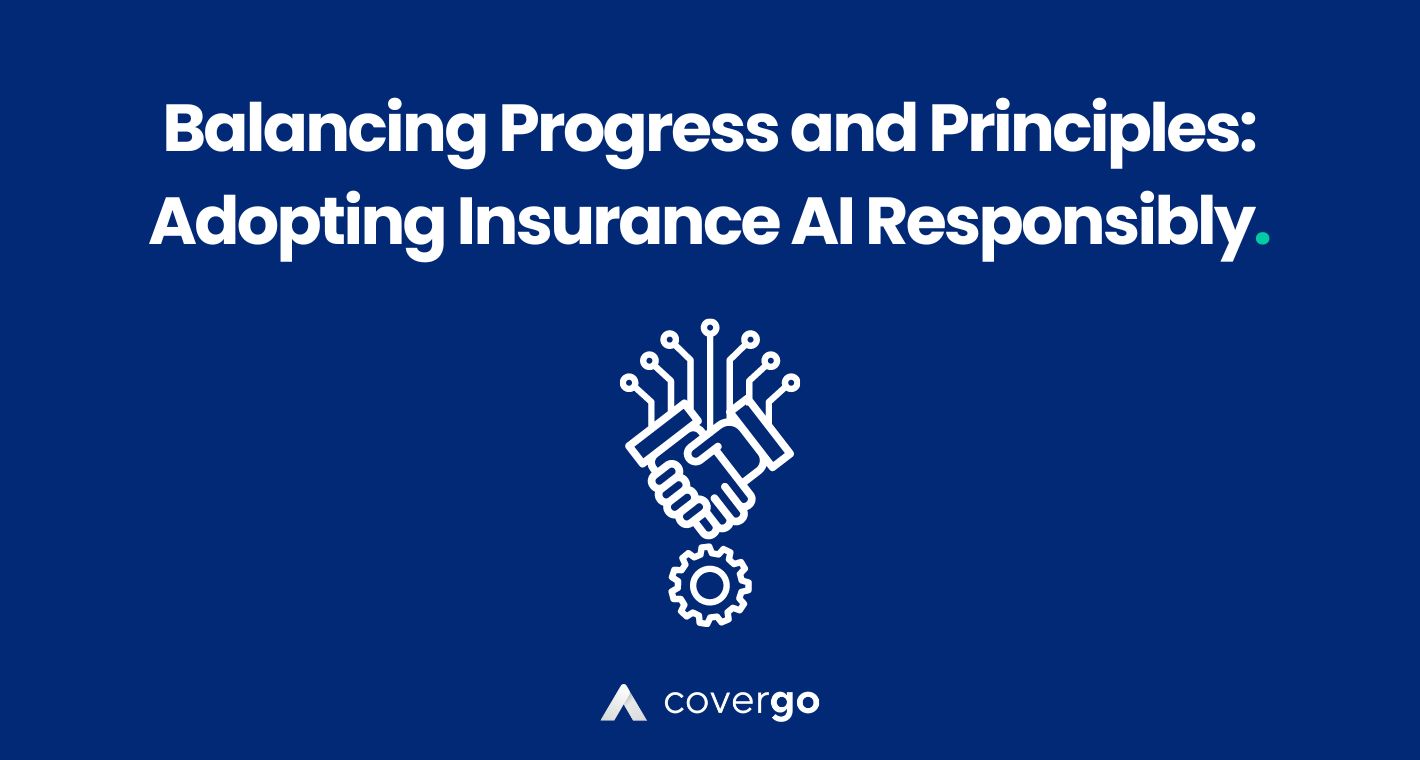To survive the hyper-competitive market, it is imperative for insurance companies to deliver efficient services at a minimal cost. In fact, cost saving is no longer merely a good practice to embrace — it occupies the top position on every decisionmaker’s wishlist as it has slowly become a strategic priority. The pandemic has unleashed a financial strain that has forced insurers to look at streamlining operations with a leaner cost base.
At the same time, traditional approaches are no longer enough to tackle the cost issue. In order to keep pace with changing customer expectations and intense competition, insurance companies need to use innovative methods for strategic cost savings. Realizing the potential of insurance technology is one means to this end.
Here’s a look at ten ways in which the use of insurtech can have a huge impact on cost savings.
1. No code, No Cost
Launching new insurance products is an area where companies spend a chunk of their money. Traditional approaches involving programmers and developers turn out to be a money pit, with companies continuously spending on monolithic code systems and resources.
To save on product building costs, it is prudent to move to no-code platforms where simple drag and drop without a single line of code can create new products. You no longer need to spend excessively to recruit top-notch software developers or even spend months on developing new software — you can speed up the product development cycle and reduce sunk costs by supplying your existing team with no-code tools to simplify their work. Doing so also helps to save on s operational costs of rectifying errors and doing paperwork.
With CoverGo, you can access an easy-to-use interface plugged with a variety of drag-and-drop tools that makes it incredibly easy for anyone to create custom-built insurance applications without any prior training in software development.
2. Access to data insights
Harnessing the true potential of data insights can be a game-changer for insurance providers.
Research shows that investing in big data analytics can help companies save anywhere between 40 to 70 percent in costs as it automates several manual processes, and improves risk assessment and underwriting processes. This not only saves customers from paying hefty premiums but also prevents insurers from missing out on key risks and identifying fraud early on. In fact, it is estimated that in the United States alone, insurers have to deal with fraudulent claims costs worth USD 80 billion per year, which makes up approximately 10% of the total payouts. By employing data analytics, fraud-detection processes become quicker and more accurate. Companies can rely on historical data to prune out claims that are highly probable to be fraudulent and save on costs.
Analyzing data trends can also help insurers better under the needs of their customers and suggest relevant products through a host of self-service tools. This can boost customer satisfaction and also help companies deliver a superior customer experience. Instead of spending a chunk of the marketing budget on pushing products customers don’t need, insurers can harness critical data and target customers with exactly what they need.
3. Reduced cost of customer acquisition
Historically, customer acquisition costs have been higher in the insurance sector due to hesitancy toward adopting digital technology. In fact, research shows that it is seven to nine times more expensive for insurers to get new customers compared to retaining existing ones. The focus has always been on investing very heavily in advertising to get noticed by more prospects. Except, the returns may not be worth it.
It is important to remember that every potential customer is looking for swift delivery, round-the-clock availability, and an easy-to-use interface when shopping for insurance products. They are looking for full transparency in pricing and the value delivered by the policy. Adopting the right technology can help insurers completely transform how customers view insurance, making it more approachable and easier to access. You can present a blend of product and pricing innovation to target price-sensitive consumers and retain them.
For example, using AI models for pricing can help insurers create unique dynamic pricing models for low-risk customers. So someone who doesn’t drive as frequently can buy a policy and pay a lesser auto insurance premium than those driving frequently. Even for such infrequent drivers, premium incentives can be provided on the basis of their driving behavior. By increasing the overall value of the product, companies can save big on acquiring new policyholders. And lesser it costs you to acquire a single customer, and the more value you provide, the more profit you can make.
4. Improved customer retention
Retaining existing customers is just as important for saving costs as reducing the cost of getting new customers. Since the cost of retention is lower than the cost of acquisition, it should become a priority for insurance companies.
Insurtech can massively benefit insurers in retaining customers as technology makes it easier to roll out new products and policies, streamline the claims process, and provide effective customer service.
In other words, bettering customer experiences is critical for cost savings. Bad experiences during customer service can force existing policyholders to shop for a new provider. But when insurance companies use tools such as predictive routing to match the right agent to the right customer, they can easily reduce the costs associated with customers reaching out to call centers for help.
5. Improved innovation at a reduced cost
While pursuing innovation is critical for outranking the competition, it should be pursued in a systematic manner. But cracking the code of successfully innovating without breaking the bank requires a little more than strategic planning alone.
Insurance companies that embrace digital technology can win big — not only can they reduce the bottlenecks in the product development cycle, but they can also roll out newer products much faster than their counterparts at a reduced cost.
All the key facets of product innovation, including updating existing offerings, maintenance of existing systems, and undertaking incremental changes, can be experimented with without incurring the astronomical costs usually associated with it.
6. Automation
Automating repetitive and time-intensive tasks by leveraging technology can not only make them more efficient but also help insurers make huge cost reductions.
For example, policy management involves a lot of manual work for insurers. After the pre-underwriting checks are performed, they still need to deploy resources for issuing the policy and updating information within the system. During peak months, companies may be forced to hire temporary staff, increasing the company’s costs.
Automating this process using an insurance automation solution that extracts key data points from all relevant documents and feeds them into the system in a structured manner can result in greater operational and cost efficiency.
7. Reduced response times through chatbots
Gone are the days when customers would flip through the FAQ section of the website to get their queries answered. In the age of microwavable popcorn, customers expect instant responses, and this is where chatbots can come in handy.
It is predicted that deploying more conversational chatbots on the website, and mobile app of insurers can help insurers save almost USD 1.3 billion by 2023. As digital native customers are increasingly expecting service providers to utilize the least disruptive ways to provide 24/7 responses, investing in inexpensive chatbots seems like a no-brainer.
Chatbots can also be configured to ensure that they provide actionable insights to the customer based on their queries instead of stalling the conversation completely as soon as the chat goes beyond the realm of answering FAQs alone. By delivering more efficient customer service, chatbots can reduce the scope for human errors and generate bigger savings in operational costs.
8. Predictive analysis
Modern predictive analytics tools can comprehensively analyze different data points through techniques such as data mining, artificial intelligence, deep learning, and machine learning. Insurers can use the information to formulate underwriting and also optimize various business processes.
For example, predictive analytics tools can be used for direct marketing by identifying potential markets. Companies can also save on operational costs by not contacting such prospects who are unlikely to respond by getting the tools to analyze key demographic data that provides insights into the behavior patterns of such prospects.
9. Embedded insurance
Embedded insurance refers to products that are not sold to customers on an ad hoc basis but are provided by embedding them on a platform or a marketplace. For instance, every bank adding a complementary life insurance policy with every home loan provided is embedded insurance.
Opting for embedded insurance helps insurers to lower their distribution costs as they can rely on partner distribution channels and their relationship with customers. This ensures that only those customers are targeted and offered insurance where it matters to them the most. It also helps companies build their presence in the market a lot faster and save on onboarding costs. It also results in lower premiums, incentivizing potential customers to buy more products.
At CoverGo, you can use the insurance product builder with 500+ insurance APIs that can be easily integrated with any legacy or third-party system and embedded with different policies without a single line of code.
10 – Implementing effective claims management
Insuretech solutions help claim processes become superior and more cost-effective.
For instance, if someone calls to report that they have lost their three-year-old iPhone, the person handling the claim should be able to look up the item’s depreciated value at the click of a button.
This can only happen when insurers standardize their processes, right from reporting the insurance claim to the various back-end activities involved in processing the claim. Identifying various inefficiencies and bottlenecks can create a massive impact on cost savings by preventing claims leakage. Insurtech provides an opportunity to digitize end-to-end processes by consolidating and modernizing them and introducing higher levels of automation.
Conclusion
There is no “one size fits all” solution when it comes to embracing insurance technology for cost savings. What cost savings mean for different insurers depends on the context. But insurtech provides various avenues for optimizing the insurance model and reducing costs. These solutions are no longer simply good to have — they are beneficial for both insurers and end customers.



